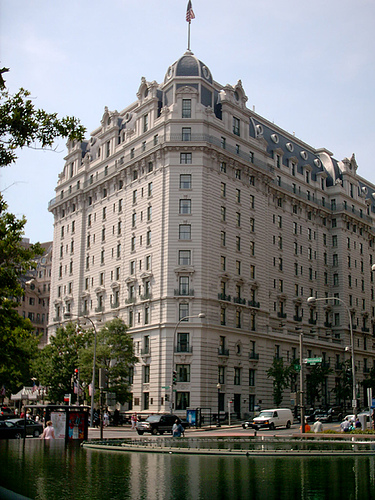
Main Page > 1999 Washington DC: The Capital Crimes Tour >
Mike and Bone arose to another hot and steamy day in the Nation's Capital where they grabbed a quick breakfast in one of DC's most noted restaurants, Old Ebbett's Grill in the Williard Hotel.
The very famous and infamous Willard Hotel !

A most celebrated historic place in DC, the Willard Hotel has been the focal point for elegant dinners, meetings, and gala social events for more than 150 years. An institution, this grand Washington DC historic hotel has hosted almost every U.S. president since Franklin Pierce in 1853. On August 28, 1963, the Reverend Martin Luther King finished his famous “I Have A Dream” speech while a guest at the Willard. Other notable guests have included Charles Dickens, Buffalo Bill, David Lloyd George, P.T. Barnum, Lord and Lady Napper, and countless others. Walt Whitman mentioned the hotel in his works; and Mark Twain penned two books here in the early 1900s. Throughout the ages, no phrase has raised eyebrows like “I’m staying at the Willard."
Julia Ward Howe's Plaque at the Willard
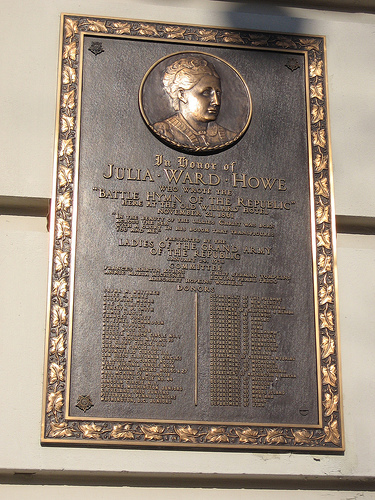
American author Nathaniel Hawthorne observed in the 1860s that "the Willard Hotel more justly could be called the center of Washington than either the Capitol or the White House or the State Department." From 1847 when the enterprising Willard brothers, Henry and Edwin, first set up as innkeepers on the corner of 14th Street and Pennsylvania Avenue, the Willard has occupied a unique niche in the history of Washington and the nation. The site upon which the Willard stands was originally part of the farm of David Burnes. In 1816 John Tayloe built a row of six two-story-and-attic houses as an investment . By 1818 the corner was being used as a hotel.
In 1847 Benjamin Ogle Tayloe leased the establishment to Henry A. Willard and his brother, Edwin. Edwin withdrew from the management, to be replaced by his brother Joseph C.Willard in 1849. In 1853 the brothers purchased the entire row of houses from Tayloe's heirs, uniting the buildings architecturally in a major remodeling. In 1858 the Willard's expanded again, purchasing the property of Col. James Kearney on the southwest corner of 14th and F Streets. They demolished the Kearney Mansion and built a six-story addition to the hotel. Next an adjoining Presbyterian Church on F Street was acquired and converted to an auditorium known as Willard Hall. In succeeding years, as business increased, the roofs of the conglomerate hotel were raised to allow for vertical expansion. Finally, at the turn of the century, the Willard underwent a massive transformation. The new Willard, designed by New York architect Henry Janeway Hardenbergh and erected by the George A. Fuller Company, was hailed at its opening as Washington's first skyscraper. Completed in 1904, the new building saw an addition of 100 rooms in 1925, broadening the F Street facade by about 49 feet.
The property remained in the Willard family until 1946, closed in 1968, and underwent extensive renovation, again opening its doors in 1986. Presidents Taylor, Fillmore, Pierce, Buchanan, Lincoln, Grant, Taft, Wilson, Coolidge and Harding stayed at the Willard. Other notable guests have included Charles Dickens, Buffalo Bill, David Lloyd George, P.T. Barnum, Lord and Lady Napper and countless others. Walt Whitman included the Willard in his verses and Mark Twain wrote two books there in the early 1900s. It was Vice President Thomas R. Marshall, irritated at the Willard's high prices, who there coined the phrase "What this country needs is a good 5-cent cigar."
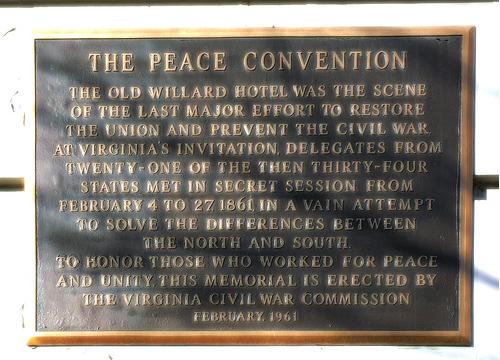
After breakfast at Willard's, the Boys thought it would be a capital idea to visit the Capital !
Heading to the Scene of so many crimes, the Nation's Capital !
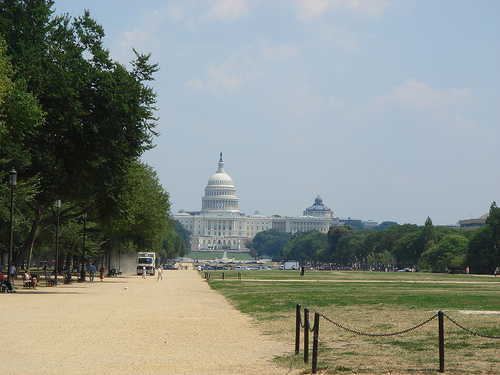

As it appears today, the Capitol Rotunda is the result of two distinct building campaigns. Dr. William Thornton, who won the competition for the design of the U.S. Capitol in 1793, conceived the idea of a central rotunda. Due to a shortage of funds and materials, sporadic construction phases, and the fire set by the British in 1814, the Rotunda was not begun until 1818. The Rotunda was completed under the direction of Charles Bulfinch by the time of the visit of the Marquis de Lafayette in 1824.
The curved sandstone walls are divided by fluted Doric pilasters with wreaths of olive branches carved in the frieze above. Eight framed niches hold large historical paintings. Four revolutionary period scenes were commissioned by Congress from John Trumbull in 1817: Declaration of Independence, Surrender of General Burgoyne, Surrender of Lord Cornwallis, and General George Washington Resigning his Commission. They were placed between 1819 and 1824.
"Err, anyone seen Newt Gingrich !!! " Mike
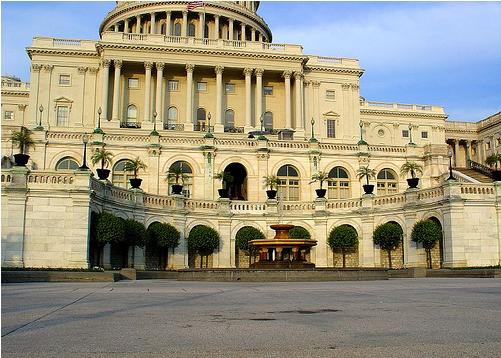

The Rotunda: The "Chapel of Democracy"
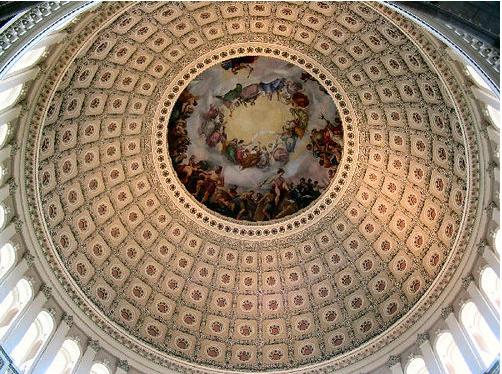
Four scenes of early exploration were added between 1840 and 1855: Landing of Columbus, Discovery of the Mississippi, Baptism of Pocahontas, and Embarkation of the Pilgrims. Four wreathed panels above the paintings frame portrait busts of the early explorers John Cabot, Christopher Columbus, Sir Walter Raleigh, and Sieur de La Salle.
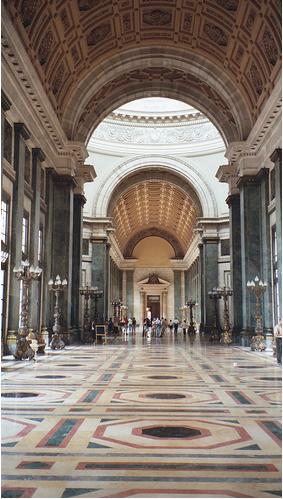
In the relief panels above the four entrances are scenes from American colonial history: Conflict of Daniel Boone and the Indians and Landing of the Pilgrims, Preservation of Captain Smith by Pocahontas, and William Penn's Treaty with the Indians.
Saints, Sinners, Mike, and Bone
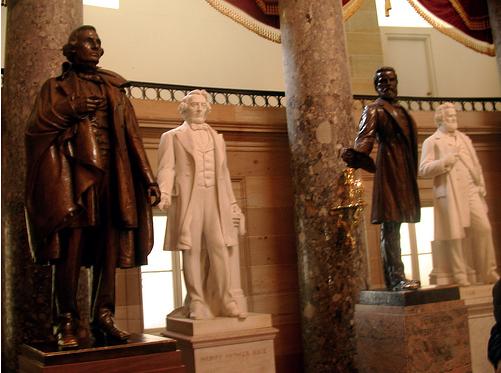

The statues and busts in the Rotunda are primarily of presidents, including a copy of a statue of George Washington by Antoine Houdon. The marble statue of Abraham Lincoln is by Vinnie Ream, for whom Lincoln sat. She was the first woman artist to receive a government commission. Other former presidents commemorated with statues in the Rotunda include Dwight David Eisenhower, James Garfield, Ulysses S. Grant, Andrew Jackson, Thomas Jefferson, Ronald Wilson Reagan, and Gerald Ford. Of course finding Gerald Ford, noted Michigan All American Football player and Grand Rapids native were particularly cool to Mike and Bone. After an couple of hours of cool touring, the boys had to make a decision, wait three hours in the 100 degree heat to tour the White House, especially after what Bill did to Monica, or head on to other more presidential spots, so they whipped past the White House and on to Fords Theatre !
The Rotunda: The "Chapel of Democracy"
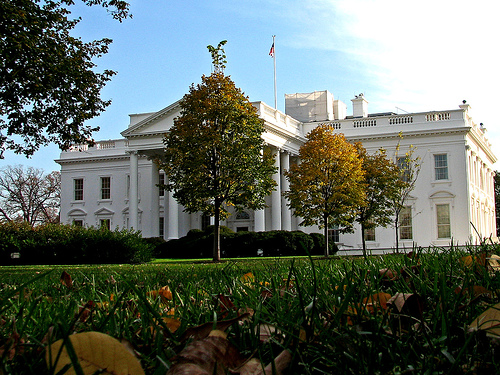
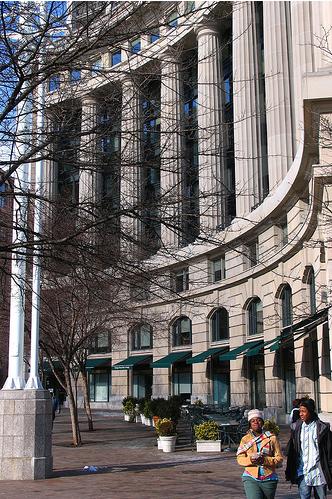
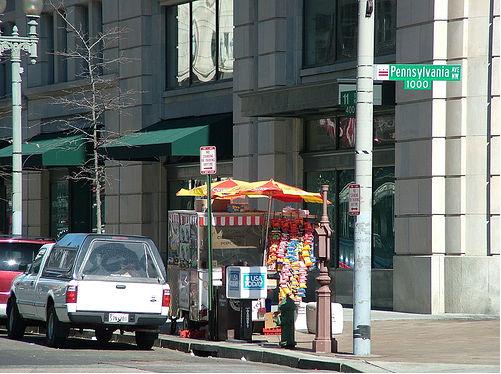
Walking around downtown the Boys noticed that while not New York, Washington is a very cool city with lots of people and very convenient hot dog stands for a mid-morning lunch !
"Other than that, how was the play Mrs. Lincoln?"
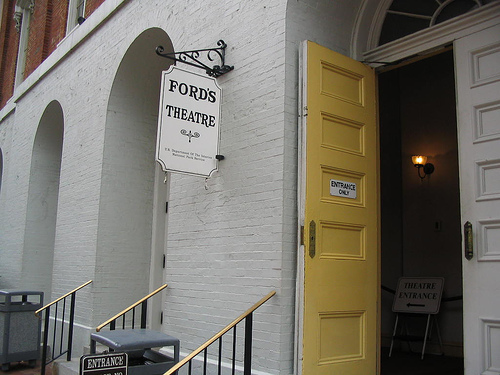
After a walking lunch, Mike and Bone joined the National Parks Tour of Ford’s Theatre, seen of one of the most dramatic and tragic scenes in American History. John T. Ford’s Theatre was only a few blocks from the White House and a favorite recreation of Abraham Lincoln while bearing the heavy weight of the Civil War. Only days after Robert E. Lee surrendered at Appomattox, on April 14, John Wilkes Booth a confederate sympathizer living in the Capital morning started at the stroke of midnight. Lying wide awake in his bed at the National Hotel, he wrote his mother that all was well, but that he was "in haste". In his diary, he wrote that "Our cause being almost lost, something decisive and great must be done".
Lincoln's day started well for the first time in a while. Hugh McCulloch, the new Secretary of the Treasury, remarked that on that morning, "I never saw Mr. Lincoln so cheerful and happy". No one could miss the difference. For months, the President had looked pale and haggard. Lincoln himself told people how happy he was. This caused First Lady Mary Todd Lincoln some concern, as she believed that saying such things out loud was bad luck. Lincoln paid her no heed. He met with his cabinet that day and later had a brief meeting with Vice President Andrew Johnson, the first between the two since Johnson had shown up drunk to take the vice presidential oath on Inauguration Day, six weeks prior. At around noon, while visiting Ford's Theatre to pick up his mail (Booth had a permanent mailbox there), Booth learned from the brother of John Ford, the owner, that the President and General Grant would be attending the theatre to see Our American Cousin that night. Booth determined that this was the perfect opportunity for him to do something "decisive". He knew the theater's layout, having performed there several times, as recently as the previous month. That same afternoon, Booth went to Mary Surratt's boarding house in Washington, D.C. and asked her to deliver a package to her tavern in Surrattsville, Maryland. He also requested Surratt to tell her tenant who resided there to have the guns and ammunition that Booth had previously stored at the tavern ready to be picked up later that evening.She complied with Booth's requests and made the trip, along with Louis J. Weichmann, her boarder and son's friend. This exchange, and her compliance in it, would lead directly to Surratt's execution three months later. At seven o'clock that evening, John Wilkes Booth met for a final time with all his fellow conspirators. Booth assigned Lewis Powell to kill Secretary of State William H. Seward at his home, George Atzerodt to kill Vice President Andrew Johnson at his residence, the Kirkwood Hotel, and David E. Herold to guide Powell to the Seward house and then out of Washington to rendezvous with Booth in Maryland. Booth planned to shoot Lincoln with his single-shot derringer and then stab Grant with a knife at Ford's Theatre. They were all to strike simultaneously shortly after ten o'clock that night. Atzerodt wanted nothing to do with it, saying he had only signed up for a kidnapping, not a killing. Booth told him he was in too far to back out.
The Presidential Box at Ford's Theatre
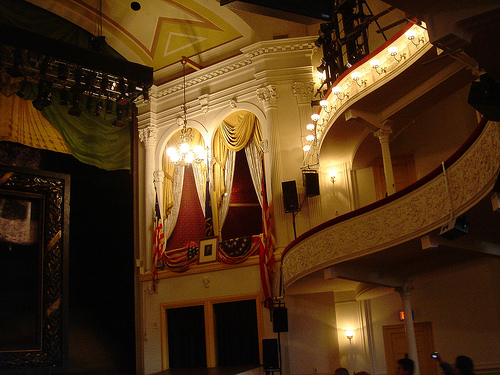
Contrary to the information Booth had overheard, General and Mrs. Grant had declined the invitation to see the play with the Lincolns, as Mrs. Lincoln and Mrs. Grant were not on good terms. Several other people were invited to join them, until finally Major Henry Rathbone and his fiancée Clara Harris (daughter of New York Senator Ira Harris) accepted. The Lincoln party arrived late and settled into the Presidential Box, which was actually two corner box seats with the dividing wall between them removed. Ford's Theater was full with 1,700 in attendance. Mrs. Lincoln whispered to her husband, who was holding her hand, "What will Miss Harris think of my hanging on to you so?" The president replied, "She won't think anything about it". Those were the last words ever spoken by Abraham Lincoln. It was now about 10:20 pm. The box was supposed to be guarded by a policeman named John Frederick Parker who, by all accounts, was a curious choice for a bodyguard. During the intermission, Parker went to a nearby tavern with Lincoln's footman and coachman. It is unclear whether he ever returned to the theatre, but he was certainly not at his post when Booth entered the box.[25] Nevertheless, Booth's celebrity status as a premier actor did not warrant any questioning from audience members, who assumed he was coming to call on the President. Dr. Charles Brainerd Todd, a Navy Surgeon who had been aboard when the Lincolns visited his ship the monitor Montauk on April 14, was also present at Ford's Theatre that evening and wrote in an eyewitness account that: About 10:25 pm, a man came in and walked slowly along the side on which the "Pres" box was and I heard a man say, "There's Booth" and I turned my head to look at him. He was still walking very slow and was near the box door when he stopped, took a card from his pocket, wrote something on it, and gave it to the usher who took it to the box. In a minute the door was opened and he walked in. Upon gaining access through the first door of the entry to the Presidential Box, Booth barricaded the inward-swinging door behind him with a wooden stick that he pried between the wall and the door. He then turned around, and looked through the tiny peep-hole he had carved in the second door (which granted entry the Presidential Box) earlier that day.
Lincoln leaned forward and looked down to the left in the audience where he seemed to recognize someone. It was now Act III, Scene II. Booth knew the play by heart, and thus waited for the precise moment when actor Harry Hawk (playing the lead role of the "cousin", Asa Trenchard), would be onstage alone to speak what was considered the funniest line of the play. Booth hoped to employ the enthusiastic response of the audience to muffle the sound of his gunshot. With the stage to himself, Asa (Hawk) responded to the recently departed Mrs. Mountchessington, "Don't know the manners of good society, eh? Well, I guess I know enough to turn you inside out, old gal; you sockdologizing old man-trap!" With hysterical laughter permeating the theatre, Booth opened the door, crept forward and shot the President in the back of the head at point-blank range. Lincoln immediately slumped over in his rocking chair, mortally wounded, Mary reached out, caught him, and then screamed when she realized what happened. Upon hearing the gunshot, Rathbone quickly jumped from his seat and tried to prevent Booth from escaping. Booth dropped the pistol and drew a knife, stabbing the major violently in the arm reaching the bone. Rathbone quickly recovered and again tried to grab Booth as he was preparing to jump from the sill of the box. Booth again stabbed at Rathbone in the chest and then vaulted over the rail of the box down to the stage below (about a twelve-foot drop). In the process, his riding spur became entangled on the Treasury flag decorating the box, and he landed awkwardly on his left foot, fracturing his left fibula just above the ankle. He raised himself up despite the injury and began crossing the stage, making the audience believe that he was part of the play. Booth held his bloody knife over his head, and yelled either "Sic semper tyrannis!" the Virginia state motto, meaning "Thus always to tyrants" in Latin or "The South is avenged!". Mary Lincoln's and Clara Harris' screams and Rathbone's cries of "Stop that man!"caused the audience to realize that this was not part of the show, and pandemonium immediately broke out. Booth ran across the stage just when Rathbone shouted and left just before anybody could lunge at him, and ran out the side door to the horse he had waiting outside. Some of the men in the audience chased after him when they noticed what was going on, but failed to catch him. Booth struck "Peanuts" Burroughs (who was holding Booth's horse) in the forehead with the handle of his knife, leaped onto the horse, kicked Burroughs in the chest with his good leg, and rode away into the night.
John Wilkes Booth's Derringer
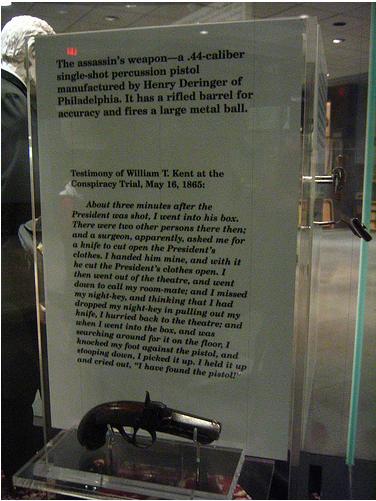
Charles Leale, a young Army surgeon doctor on liberty for the night, and attending the play, made his way through the crowd to the door at the rear of the Presidential box when he saw Booth finish his performance to the audience and saw the blood on Booth's knife. The door would not open. Finally, Rathbone saw a notch carved in the door and a wooden brace jammed there to hold the door shut. Rathbone shouted to Leale, who stepped back from the door, allowing Rathbone to remove the brace and open the door. Charles Leale entered the box to find Rathbone bleeding profusely from a deep gash in his chest that ran the length of his upper left arm as well as a long slash in his arm. Nonetheless, he passed Rathbone by and stepped forward to find Lincoln slumped in his chair, held up by Mary, who was sobbing and could not control herself. Leale discovered Lincoln paralyzed, and barely breathing. Leale lowered the President to the floor believing that Lincoln had been stabbed in the shoulder by the knife. A second doctor in the audience, Charles Sabin Taft, was lifted bodily from the stage over the railing and into the box. Todd also seated in the audience stated, "I attempted to get to the box, but I could not, and in an instant, the cry was raised 'The President is assassinated'. Such a scene I never saw before." Taft and Leale cut away Lincoln's blood-stained collar and opened his shirt, and Leale, feeling around by hand, discovered the bullet hole in the back of his head right next to his left ear. Leale attempted to remove the bullet, but the bullet was too deep in his head and instead Leale dislodged a clot of blood in the wound. Consequently, Lincoln's breathing improved. Leale learned that if he continued to release more blood clots at a specific time, Lincoln would still breathe. Then Leale saw that the bullet entered Lincoln's skull, fractured part of it badly and went through the left side of his brain before lodging just above his right eye almost exiting the other side of his head. Leale finally announced that it made no difference: "His wound is mortal. It is impossible for him to recover." Todd reported that as news of the assassination spread to the street, "Soldiers, sailors, police, all started in every direction but the assassin had gone. Some General handed me a note and bid me go to the nearest Telegraph office and arouse the nation. I ran with all my speed, and in ten minutes the sad news was all over the country."
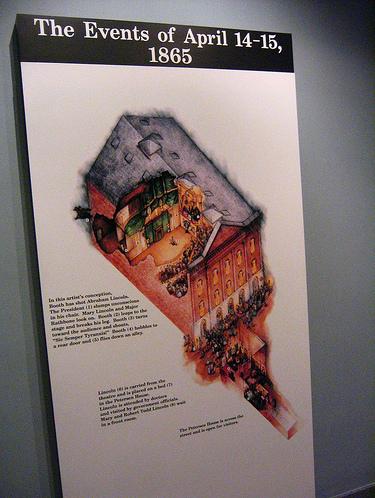
Petersen House and the Deathbed of Abraham Lincoln
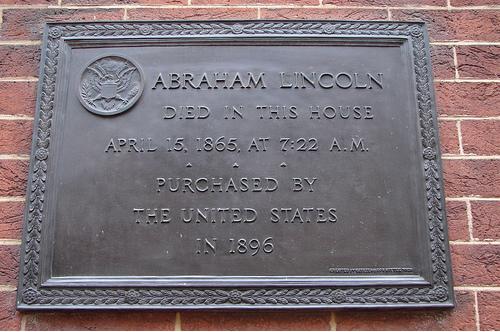
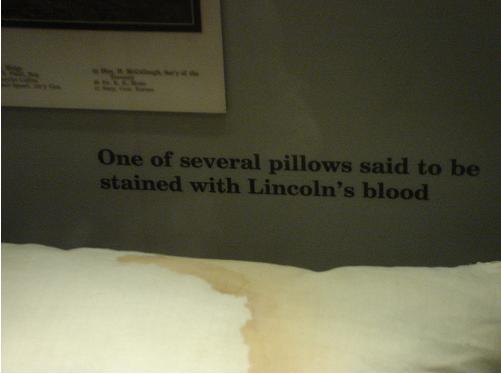
Leale, Taft, and another doctor from the audience, Albert King, quickly consulted and decided that while the President must be moved, a bumpy carriage ride across town to the White House was out of the question. After briefly considering Peter Taltavull's Star Saloon next door, they chose to carry Lincoln across the street and find a house. The three doctors and some soldiers who had been in the audience carried the President out the front entrance of Ford's Theatre. Across the street, a man was holding a lantern and calling "Bring him in here! Bring him in here!" The man was Henry Safford, a boarder at William Petersen's boarding house opposite Ford's who had been startled by the commotion across the street. The men carried Lincoln into the boarding house and into the first-floor bedroom, where they laid him diagonally on the bed because his tall frame would not fit normally on the smaller bed.[ A vigil began at the Petersen House. The three physicians were joined by Surgeon General of the United States Army Joseph K. Barnes, Charles Henry Crane, Anderson Ruffin Abbott, and Robert K. Stone. Crane was a major and Barnes' assistant. Stone was Lincoln's personal physician. Robert Lincoln, home at the White House that evening, arrived at the Petersen House after being told of the shooting at about midnight. Tad Lincoln, who had attended Grover's Theater to see Aladdin and the Wonderful Lamp, was not allowed to go to the Petersen House, although he was at Grover's Theater when the play was interrupted to report the news of the President's assassination. Secretary of the Navy Gideon Welles and United States Secretary of War Edwin M. Stanton came and took charge of the scene. Mary Lincoln was so unhinged by the experience of the assassination that Stanton ordered her out of the room by shouting, "Take that woman out of here and do not let her in here again!" While Mary Lincoln sobbed in the front parlor, Stanton set up shop in the rear parlor, effectively running the United States government for several hours, sending and receiving telegrams, taking reports from witnesses, and issuing orders for the pursuit of Booth. Lincoln died from the bullet wound to his brain at 7:22am on April 15, 1865.He was 56 years old. Mary Lincoln was not present at the time of his death and neither were his children. The crowd around the bed knelt for a prayer. When they were finished, Stanton made a statement, though there is some disagreement among historians as to what exactly the statement was. All agree that he began "Now he belongs to the..." with some stating he finished with ages while others believe he finished with angels.
The Home of Mary Surratt, A Booth Collaborator, and now a Chinese Buffet !!
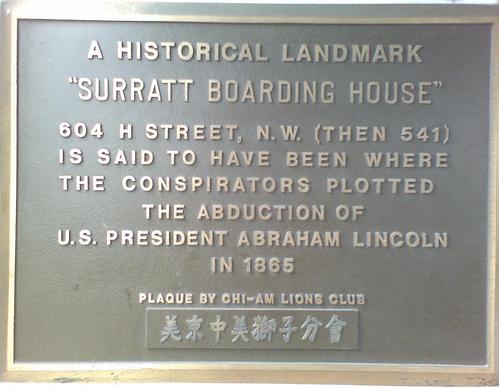
At the end of the story and the tour Mike and Bone were both very reflective of Ford's Theatre and the gravity of the history they just experienced. Despite the heat, Mike and Bone left the area with a little chill and very deep in reflection. So much so they jumped into a local bar for a beer and further reflection on Ole Abe.
Wondering about Wilson
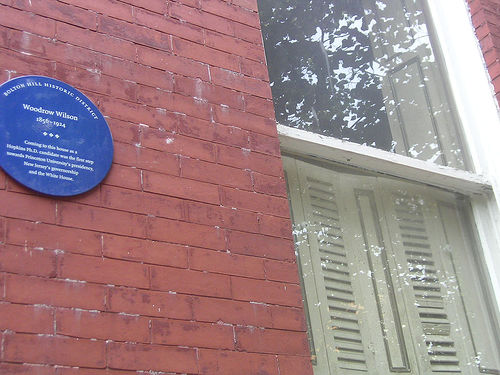
Checking out one President begat checking out another ! Bone knew that Woodrow Wilson lived and died in DC, so the Boys jumped in the car and drove over to Woody's House. Woodrow Wilson, born on December 28, 1856, in Staunton, Virginia, spent his youth in the South, as the son of a devout Presbyterian family, seeing the ravages of the Civil War and its aftermath. A dedicated scholar and enthusiastic orator, he earned multiple degrees before embarking on a university career. In a fast rise politically, he spent two years as governor of New Jersey before becoming the two-term 28th president of the United States in 1912. Wilson saw America through World War I negotiating the Versailles Treaty and crafting a League of Nations, a precursor to the United Nations. Wilson was a vigorous president in his first term, however two strokes left him somewhat incapacitated in office. He suffered his second stroke during the last year of his presidency and died three years after leaving office in his home with his second wife Edith Bolling Galt. A widow herself, Edith Bolling Galt met the grieving Wilson several months after the death of his first wife. Admiration quickly deepened into a more profound relationship, and the two married in late December 1915. Wilson entrusted Edith with a secret code that accessed highly confidential war documents, and she often sat with him during Oval Office meetings. When President Wilson suffered his second serious stroke in October 1919, Edith masked the severity of his illness, making decisions in his stead and becoming, undercover, what some historians term America's first female president. Wilson made a partial recovery, but spent his remaining years seriously disabled. After leaving office in 1921, the Wilsons moved to a home in northwest Washington, D.C., where Woodrow Wilson died at the age of 67, on February 3, 1924. He was buried in the Washington National Cathedral.
Touring Woody's home was a not quite as epic as touring Ford's Theatre, so despite the allure of the early 20th century charm, it quickly bored Mike and Bone who were getting hungry and decided it was Sushi time !
General "Black Jack" Pershing from WWI

Leaving Wilson's House the Boys headed for DuPont circle to check out a Sushi place they saw on the way in. En route they noticed that at almost every intersection there was a statue of some sort, honoring some politician, general, or person of note.
Circling DuPont
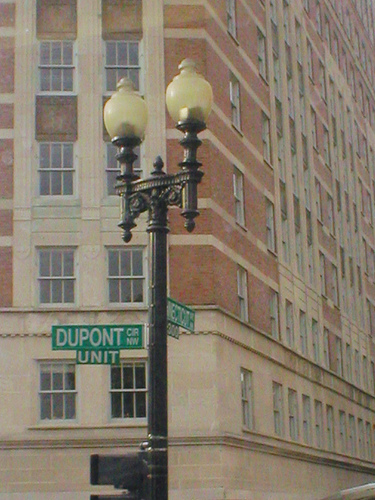
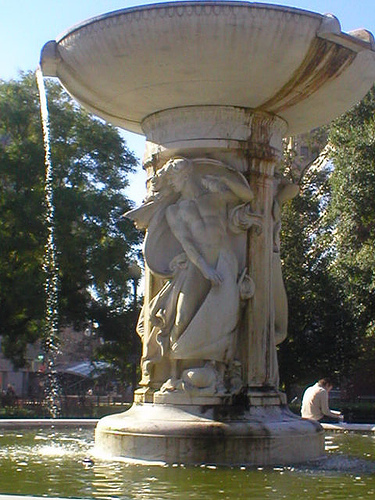
The Dupont Circle Historic District is a primarily residential district extending generally in all directions from Dupont Circle. The area was developed in the last quarter of the 19th century and the early years of the 20th century. Two types of housing predominate in the historic district: palatial mansions and freestanding residences built in the styles popular between 1895 and 1910; and three-and-four-story rowhouses, many of which are variations on the Queen Anne and Richardsonian Romanesque Revival styles, built primarily before the turn of the century. The mansions line the broad, tree-lined diagonal avenues that intersect the circle and the rowhouses line the grid streets of the historic district. Now it is filled with great restaurants and bars, such as Sushi Tayo !
Sushi Tayo !
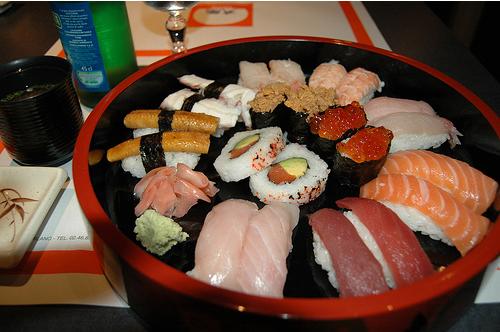
There ain't nothin' after a long day of heat and history then a heaping plate of the finest sushi. Mike and Bone gorged themselves on raw fish and Asahi Beer. As the early evening turned into late night the Boys decided on good turn deserves another and went back to the Dubliner for a night cap of Guiney's that ended around 12:30 AM.